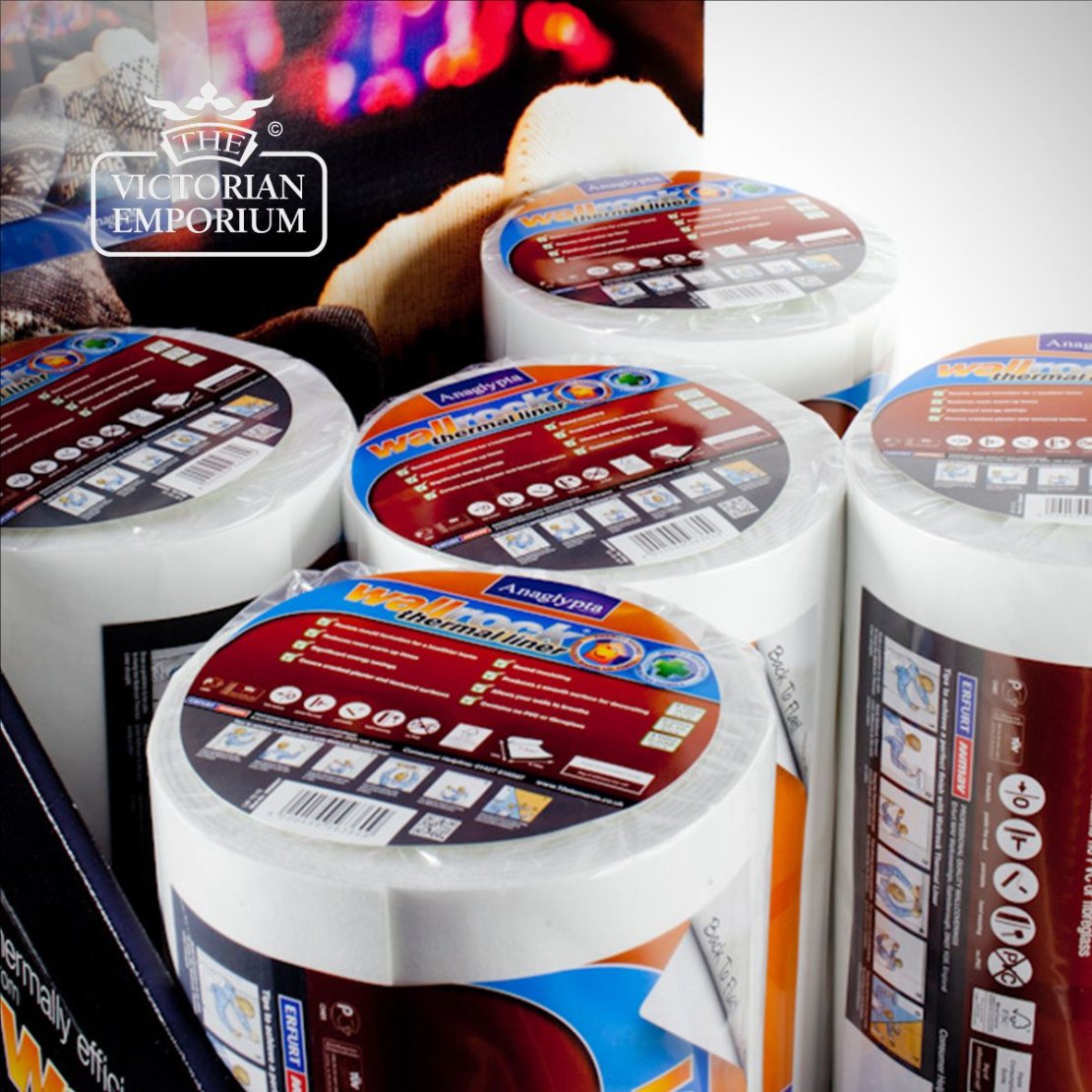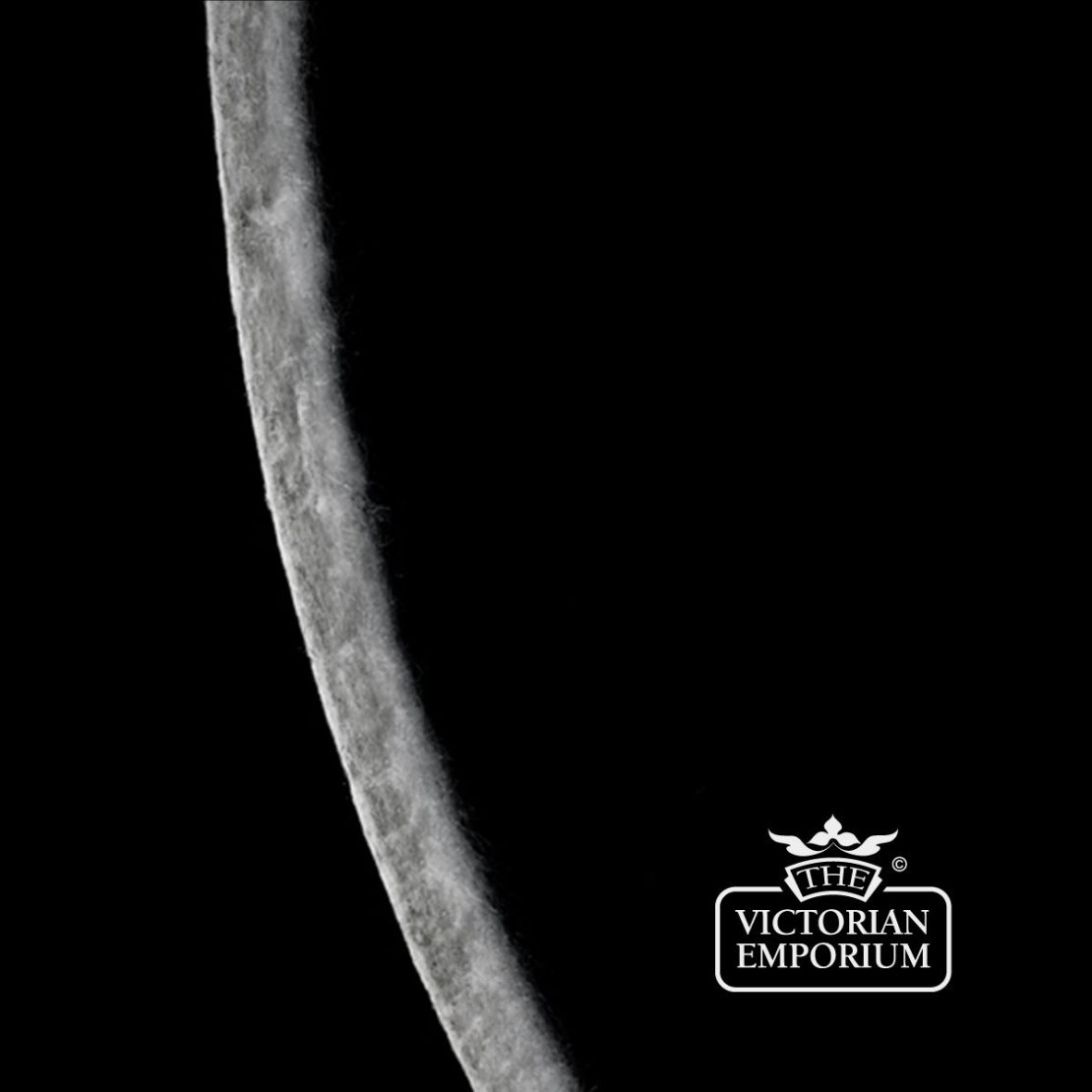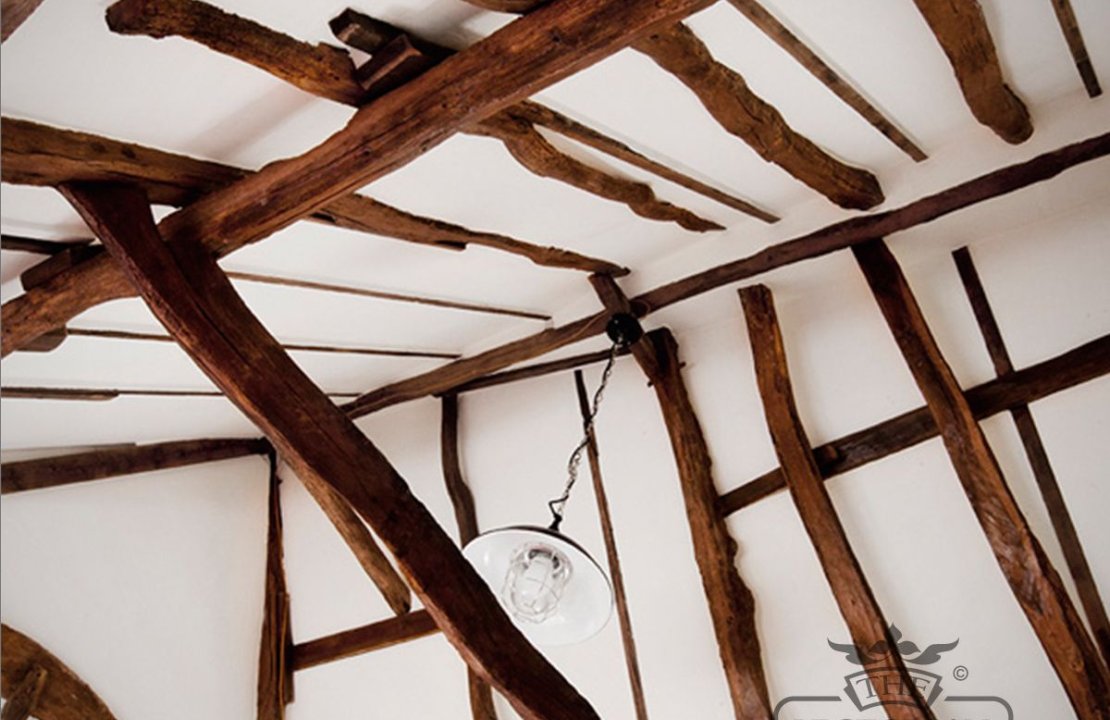Conventional lining paper
This is the most simple of technical wallpaper products which will help ensure a smooth finish under a decorative wallpaper or paint and is available in various thicknesses and pack sizes. Conventional lining papers come in the following grades: 800, 1000, 1200, 1400, 1700 and 2000 grade. Within these grades you will find a single, double and quad length roll, precisely speaking this is a 10 metre, 20 metre or 40 metre long roll. The most popular lining paper in the UK today is 1200 grade closely followed by 1400 grade lining paper, however the heavier 1700 and 2000 grade lining papers are increasing in popularity.
How to hang lining paper
Lining paper is relatively simple to select and use; essentially the higher the grade the thicker the paper. With this in mind you would categorise 800 and 1000 grade as lightweight paper, 1200 and 1400 as mid weight paper and 1700 and 2000 grade as heavy weight. As with any conventional wallpaper the key to hanging wallpaper successfully is preparation and good adhesive selection. All wall surfaces should be clean, free of dust and grime and as many imperfections as possible should be removed with a medium grit sandpaper. Cracks should be filled with a good quality filler, the walls or ceilings should be sized and sealed if required. This sizing process will definitely be required on new plaster at the very least.
What does sizing the wall mean?
Fill a bucket half with water and half with PVA, then brush the walls with the mixture and let it dry properly. When it comes to applying the wallpaper paste, it will attach itself to the glue and stick a lot better.
In regards to adhesion, we almost always recommend ready mixed adhesive as tub adhesives provide better performance and durability. Ready mixed adhesives should always be used when hanging mid to heavy weight lining paper.
Once the above preparation and adhesive selection has been made, the lining paper will need to be hung. Apply the adhesive to the rear of the paper making sure all areas are covered, fold the ends into the middle of the sheet and roll the length into a large cylindrical looking cigar. Depending on the paper, leave to soak from between 5 to 15 minutes. Most lining papers will be fully soaked after 12 minutes. Soaking is critical as this process allows the paper to soak up some of the adhesive on the rear and expand in width by as much as 5mm. It is critical this expansion takes place on the table and not on the wall as if the paper expands on the wall you will be liable to get overlapping joints and a poor level of finish.
Repeat the process with every drop and butt joint. Do not leave any obvious gaps between joints and do not overlap.
Wallrock Fibreliner offers a new easier option, a product often referred to as Non-woven, dimensionally stable or a paste the wall paper. This essentially means the paper will not shrink or expand and subsequently it does not need to be soaked which means you do not require a pasting table. Simply roller the ready mixed adhesive to the wall and hang straight from the roll. The advantages are clear - hanging Fibreliner is faster and more convenient though it also has on average 4 times greater tensile strength than conventional lining paper, as well as being available in wider rolls to limit joints and further decrease the time required to decorate a room.
Other types of specialist Technical Wallpapers
All technical wallpapers can be used to resolve issues such as rough and uneven plasterwork, cracks and crumbling plaster. However the more specialist technical wallpapers are designed as problem solvers for additional issues that typically occur in old houses. They are not designed to be used in new builds where building regulations need to be adhered to. The types of problems these specialist wallpapers can resolve are as follows:
Fire - Wallrock Fireliner is the ultimate fire resistant lining paper that will help protect vulnerable surfaces from fire. Wallrock Fireliner is a 'Class Zero' fire rated liner (tested to BS476) that also contains fire retardant so that fire risk is further limited even when the paper is peeling or has been applied over normally flammable surfaces. It can be used on a whole variety of problematic walls and ceilings, adding fire protection to cracked and damaged surfaces. The product contains active fire retardants and textile fibres for strength and durability. In addition it reinforces vulnerable and damaged surfaces.
Damp - Wallrock Dampstop Thermic utilises a very tough, strong, rot proof and salt resistant polypropylene backing bonded to a water resistant composite metallic barrier. The rot proof backing can be applied directly to the wall with Wallrock Dampstop Thermic Adhesive, effectively blocking off the appearance of unsightly penetrating damp and staining. The metallic surface can then be painted or wallpapered as if it was an issue free wall. We recommend that Wallrock Dampstop Thermic Adhesive is used for further decoration for best results. Not only does it stop unsightly damp and staining, if the composite, thermic, metallic surface is left exposed; it will also greatly enhance the reflection of heat into the room - making the product especially useful in improving energy efficiency in the home when used behind radiators and appliances.

Cold - the Wallrock Thermal liners have been listed by the Energy Saving Trust because of their thermal efficiency and energy saving properties and offer very worthwhile energy savings, around 15% on a typical solid brick external wall. Wallrock Thermal Liner works to save energy from the moment heating is turned on by slowing down the rate at which cold walls soak up heat energy - and allowing the room to warm up considerably faster, in many cases more than halving warm up times. This effect is valuable in any home with solid walls and even those with external or cavity insulation - especially where the heating is regularly turned on and off. Once the room is warmed up and comfortable, Wallrock Thermal Liner goes on working producing steady energy savings. Again this product has excellent capacity to cover and reinforce poor plaster or even over blockwork.

This product also helps reduce condensation problems and in many cases eliminates them - as much more room warmth is retained at the wall surface at an earlier stage in the warm up phase there is far less opportunity for condensation to form on a cold wall and consequently a reduced risk of unhealthy mould growth. It is suitable as a localised ‘problem solver’ for cold external walls.
Our advice here at the Victorian Emporium would always be that it is preferable to properly address and resolve structural issues in your house. If you have damp, cold, mouldy walls and crumbling plaster you should really find out why this is and resolve the issue by finding the source of the water ingress and addressing this. However some old houses do not have an obvious issue or may not have cavity walls or insulation and therefore some rooms are always cold and feel damp. This simply may be due to the location of the house ie a damp coastal area, surround by woodland, at the top of a windy hill or a building that gets little sun. The above papers can certainly go some way to improving these problematic areas and helping reduce your heating bills and making your house feel toasty warm.

Be the first to add a comment...